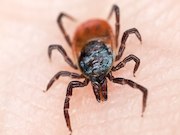During 2004 to 2016, 82 percent of all tickborne disease reports were Lyme disease
WEDNESDAY, May 2, 2018 (HealthDay News) — Vectorborne diseases represent an increasing problem in the United States, with a more than two-fold increase in the number of annual reports from 2004 to 2016, according to research published in the May 1 early-release issue of the U.S. Centers for Disease Control and Prevention’s Morbidity and Mortality Weekly Report.
Ronald Rosenberg, Sc.D., from the CDC’s National Center for Emerging and Zoonotic Infectious Diseases in Fort Collins, Colo., and colleagues analyzed data reported to the National Notifiable Diseases Surveillance System for 16 notifiable vectorborne diseases during 2004 to 2016.
The researchers identified 642,602 cases. During the study period there was an increase in the number of annual reports of tickborne bacterial and protozoan diseases, from >22,000 in 2004 to >48,000 in 2016. Eighty-two percent of all tickborne disease reports during 2004 to 2016 were Lyme disease. Mosquito-borne disease occurrence was marked by virus epidemics. Most reports of dengue, chikungunya, and Zika virus diseases were accounted for by transmission in Puerto Rico, the U.S. Virgin Islands, and American Samoa; in the continental United States, West Nile virus was endemic and periodically epidemic.
“Vectorborne diseases are a large and growing public health problem in the United States, characterized by geographic specificity and frequent pathogen emergence and introduction,” the authors write.
Copyright © 2018 HealthDay. All rights reserved.








